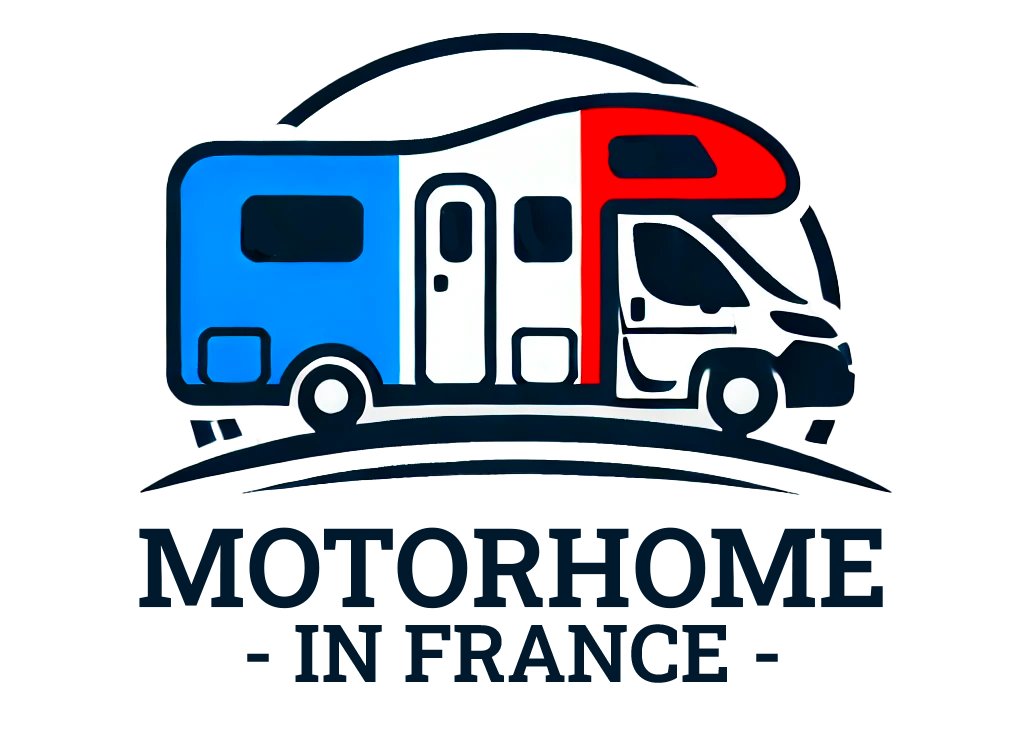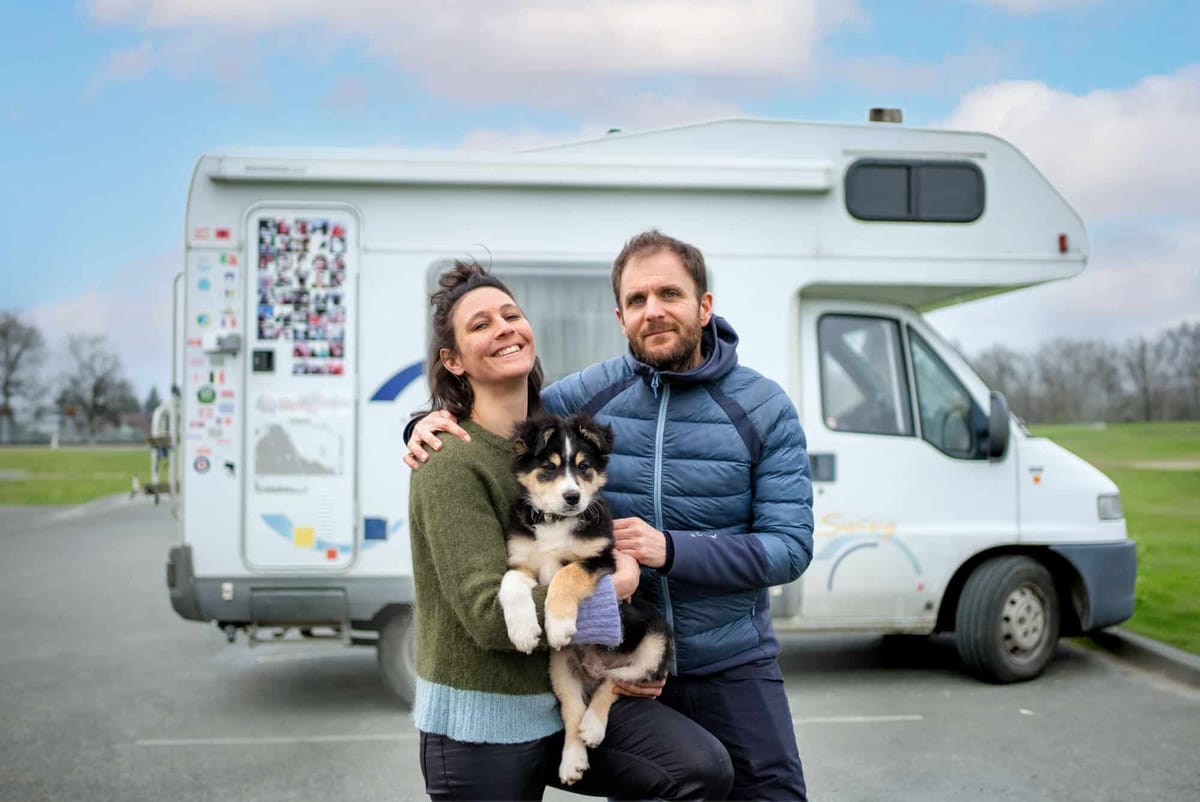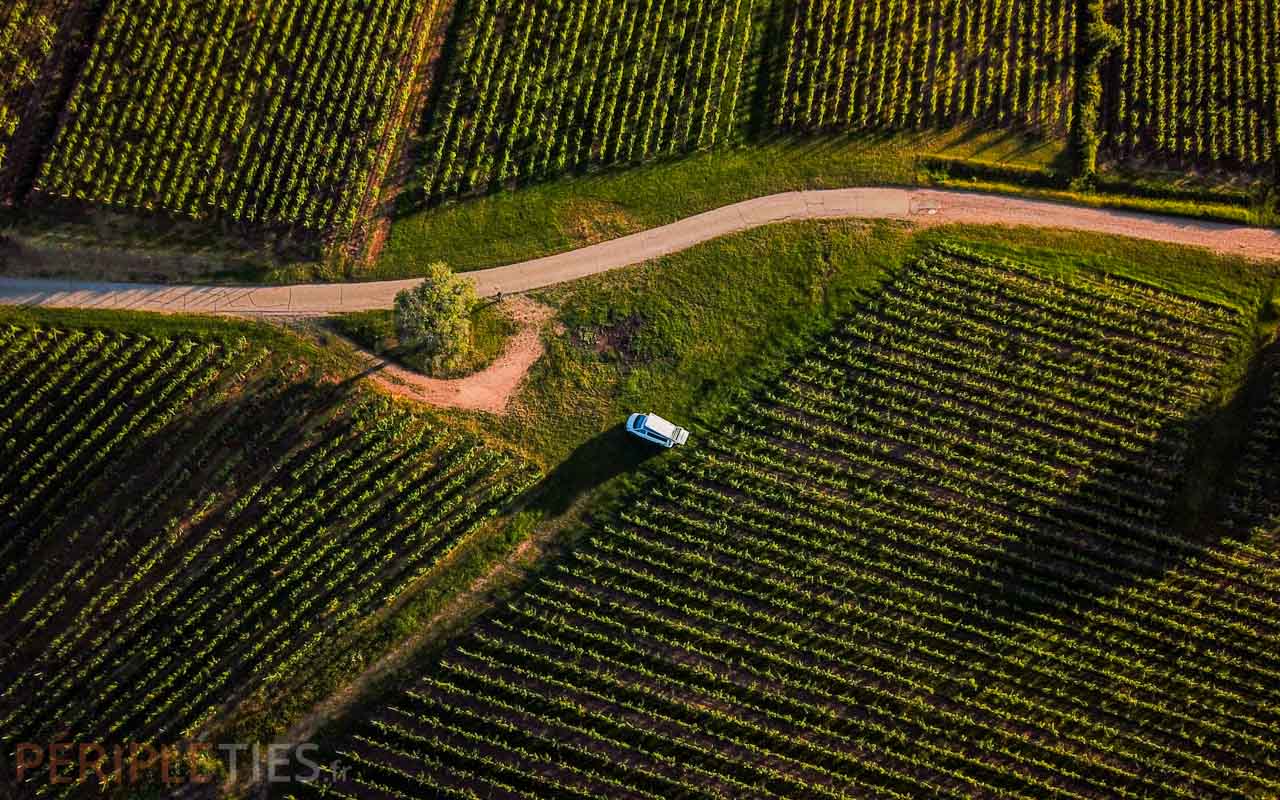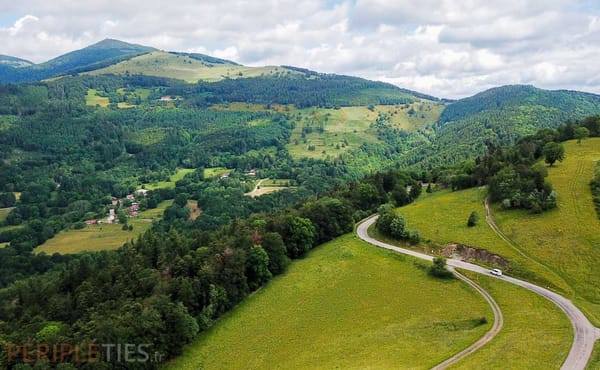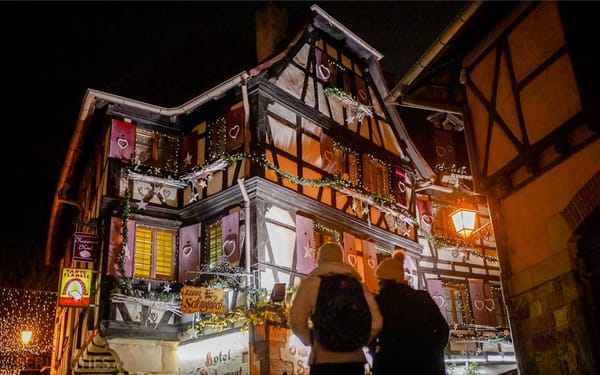This tour invites you to discover its charms by motorhome, van or camper van, along the wine route, between Alsace's vineyards, picturesque villages and emblematic sites. You can continue your journey off the beaten track.
Along the Rhine, at the foot of the Vosges mountains, the plains of Alsace stretch for miles, between hillsides and flower-filled villages. Alsace is a rich, lively and generous region, proud of its culture and traditions.
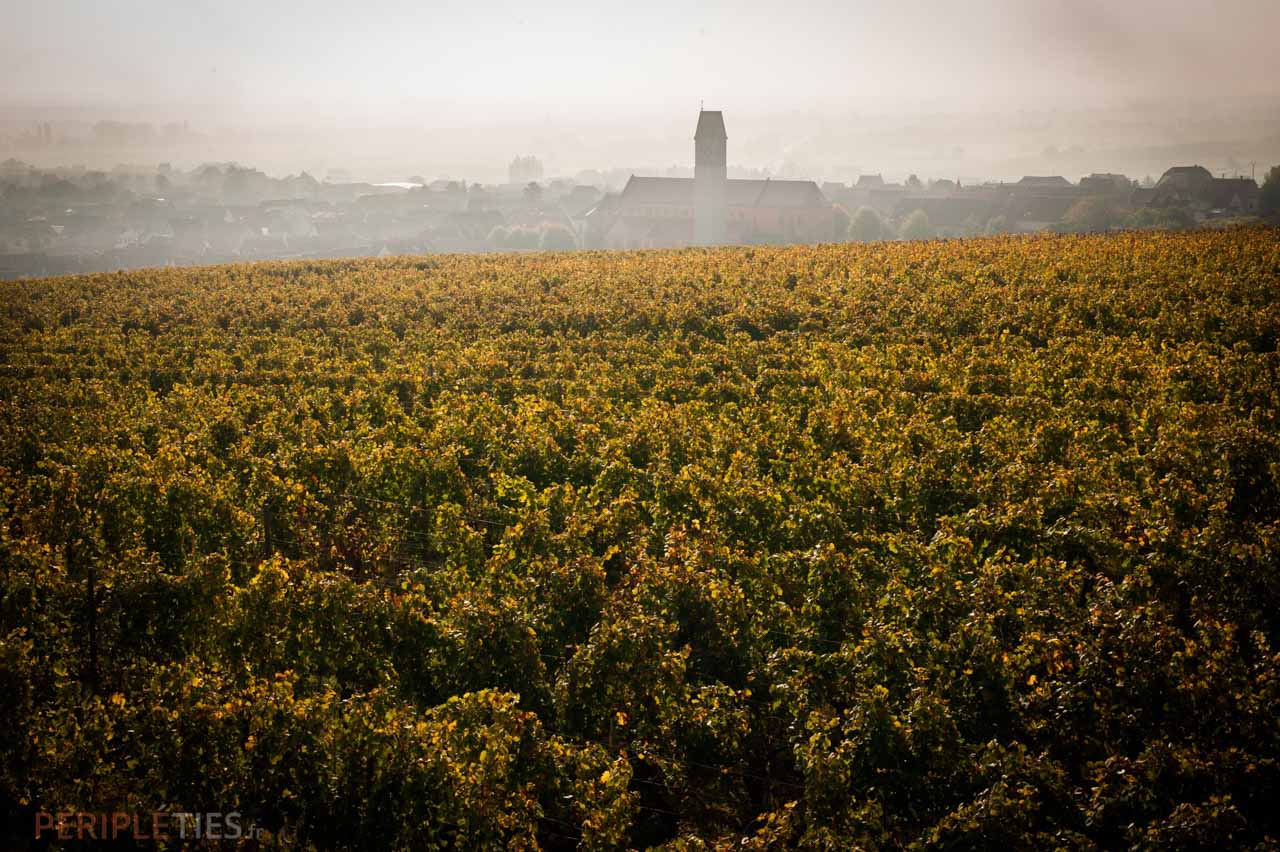
How long does the Alsace wine route take?
The Alsace wine route links the region's main wine-growing villages while visiting its admirable historical heritage. An exceptional itinerary covering around 200 km (including detours).
It's possible to do the wine route in 2 or 3 days, but if you want our advice, plan a full week to fully enjoy your trip, as there are so many landscapes and half-timbered houses to admire, heritage treasures to visit and wines to discover in a tasting cellar (in moderation, of course)!
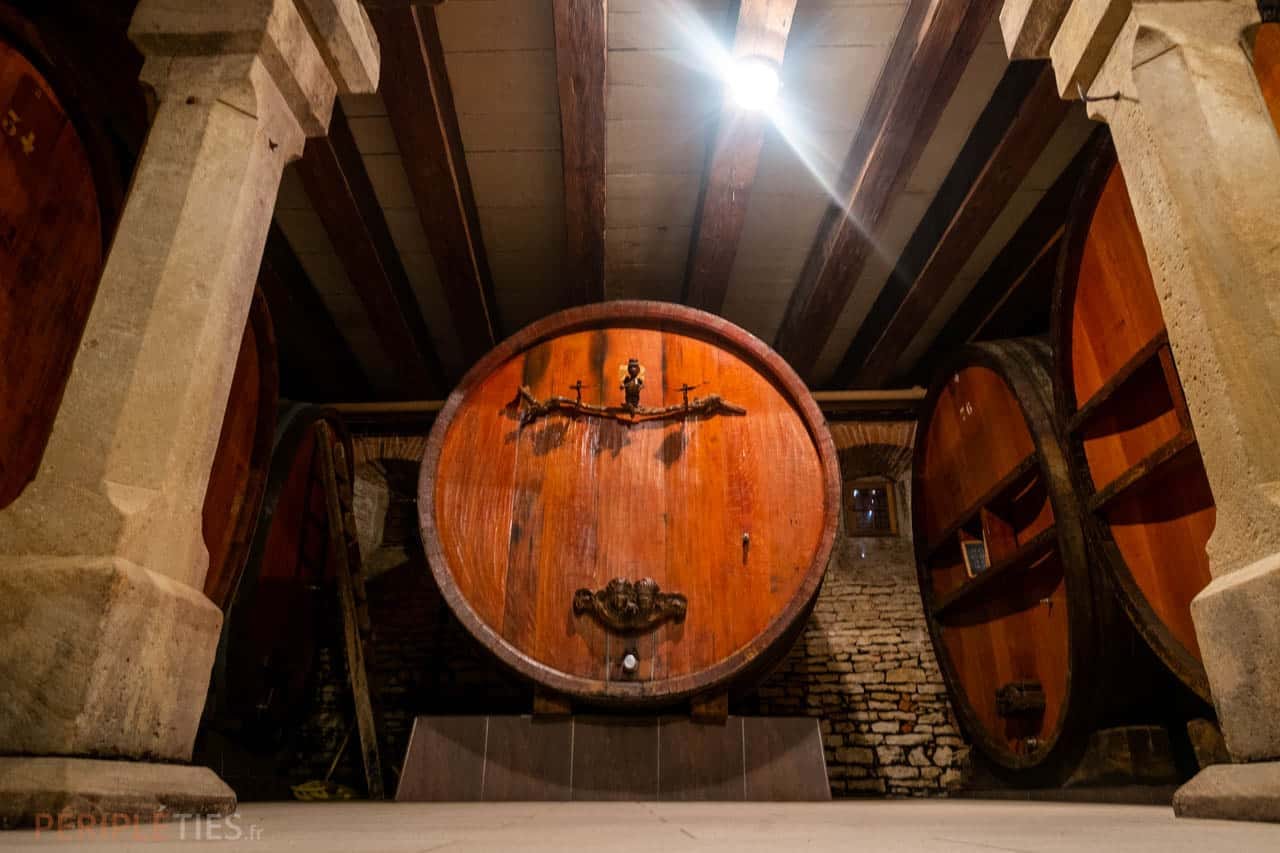
3 ideas for wine cellar visits and tastings in Alsace
Visiting the wine cellars of Alsace is a must for wine lovers. Alsace is renowned for its dry white wines made from grapes such as Riesling, Gewurztraminer and Pinot Gris. The wineries often offer wine tastings accompanied by explanations of the production methods and unique characteristics of the various wines. The owners and oenologists will be delighted to share their passion for wine with you and answer any questions you may have. It's the perfect opportunity to discover the wines of Alsace and take home a box of bottles in your motorhome of these delicious wines.
Our 3 ideas for visits on the Alsace wine route:
- Wine tour, tasting and picnic basket from €35
- Wine tasting with food and wine pairing from €20
- Visit a wine cellar in Saint-Hippolyte from €10
From Colmar to Strasbourg, on the wine route
Situated between 200 and 400 metres above sea level, Alsace's vineyards are ideally exposed. The diversity of soils and the selection of suitable grape varieties have encouraged the development of the art of wine-making in the region, as well as the emergence of Grands Crus. Alsace has no fewer than 51 of them!
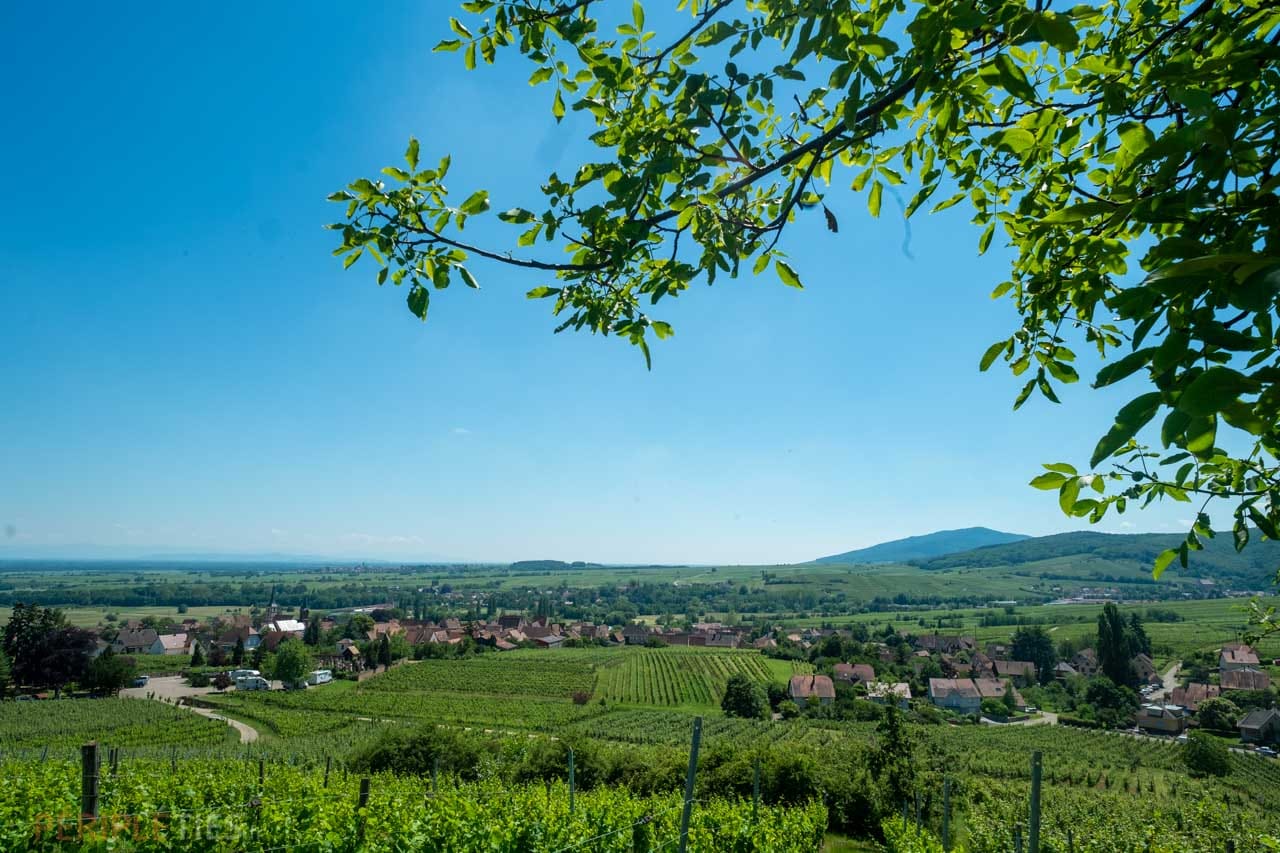
Where does the Alsace wine route start?
Stretching 170km from Thann to just outside Strasbourg, the Alsace wine route is a legendary itinerary created as part of a car rally by the Issenheim tourist office. It is the oldest wine tourism route in France, offering a tour of Alsace's grape varieties, the chance to taste the region's great vintages and stop off at some exceptional villages and sites.
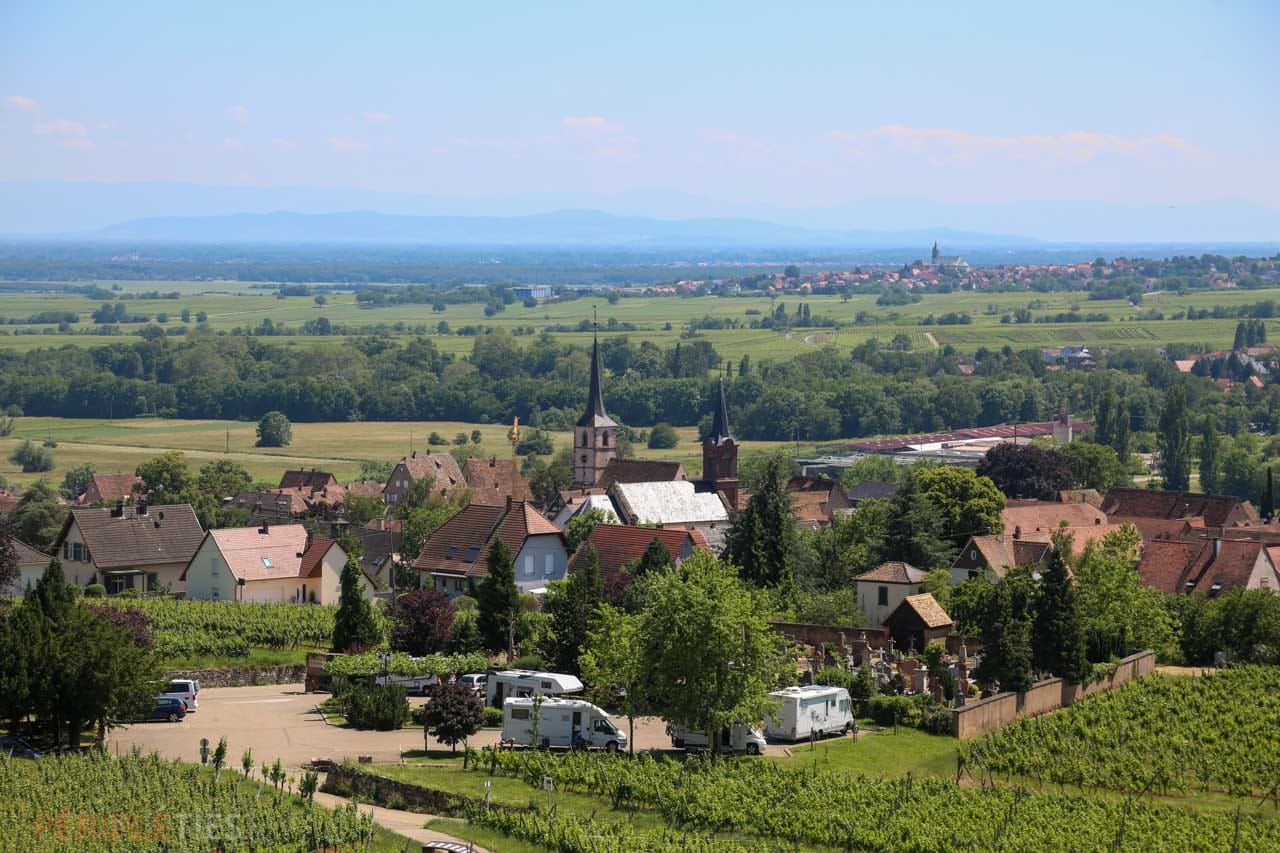
What are the most beautiful villages to visit on the Alsace wine route?
First stop Thann to see the collegiate church of Saint-Thiébaut and the Eye of the Witch. You can admire the vineyards and the town from the Rangen mountain, the only area with volcanic rock.
Near Thann, you can also admire the fortifications at Cernay, the Dominican convent at Guebwiller (a town of art and history), Murbach Abbey and the Espace des Sources at Soultzmatt.
How do you do the Alsace wine route?
Eguisheim, ‘Favourite Village of the French’ in 2013, is just a stone's throw away.
During your stopover in the town centre, you can sample the biodynamic wines of the Vignoble des 3 Terres (Domaine Mann) or take an introduction to wine-tasting with the organic wines of Domaine Emile Beyer.
Then stop off in Colmar for an enchanted break before escaping through the vineyards.
Colmar, the little Venice of Alsace
The wine capital is also nicknamed the ‘Little Venice of Alsace’ because of its many canals. Take the opportunity to sit down at a Winstub. These inns serve typical, hearty dishes in a cosy atmosphere!
If you'd like to visit Colmar on an original city tour, the Civitatis website offers a 2-hour free tour to help you discover the history of this famous Alsatian town.
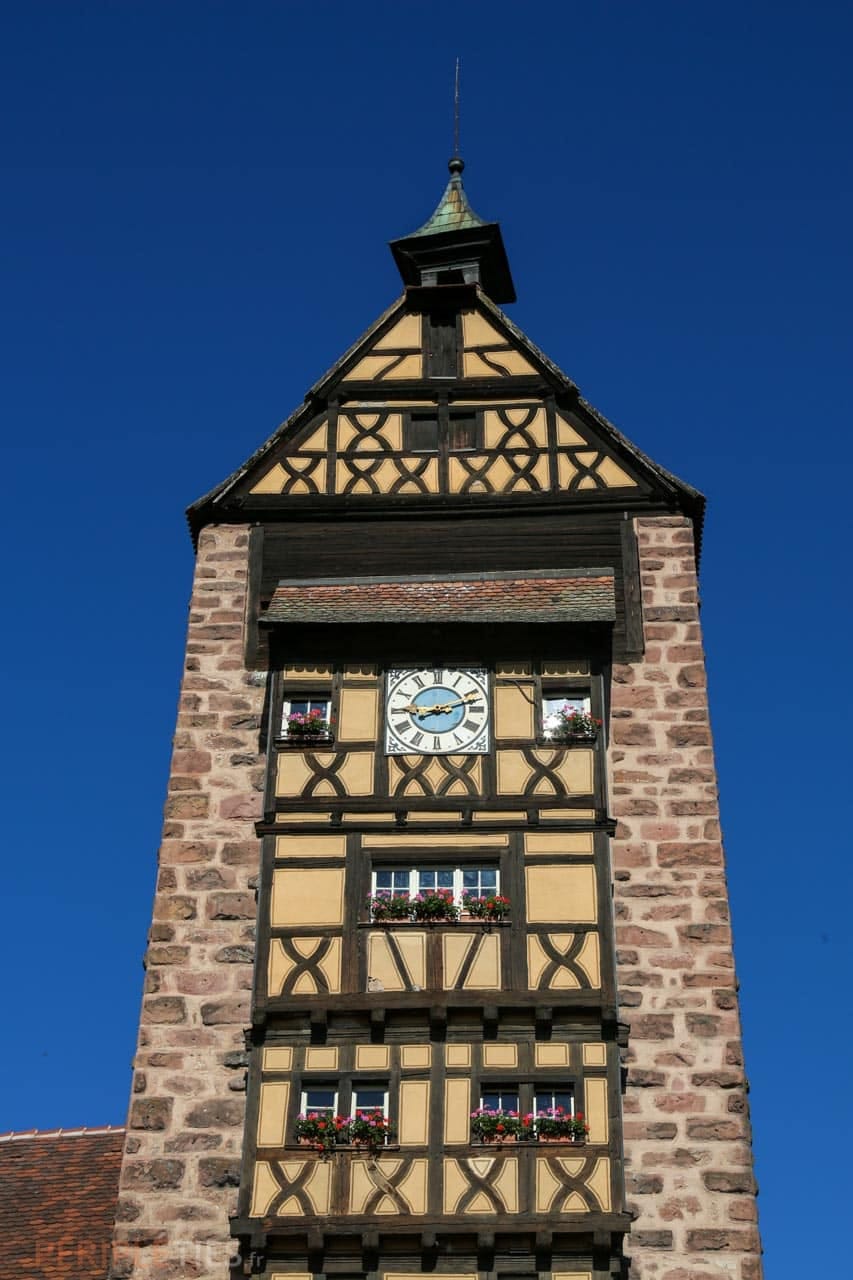
Kaysersberg, Riquewihr, Hunawihr and Ribeauvillé
You can also stop off at some of Alsace's most beautiful villages. In Kaysersberg (at Domaine Bernard Haas & Fils, for example), Riquewihr, Hunawihr and Ribeauvillé, ‘the pearl of the vineyards’ whose speciality is Riesling and Gewurztraminer.
Motorhomes on the Wine Route can sometimes be hard to find in high season. You'll need to check the available parking areas (see end of article). If you're planning a trip along the wine route in December, Riquewihr also has one of the finest Christmas markets in Alsace.
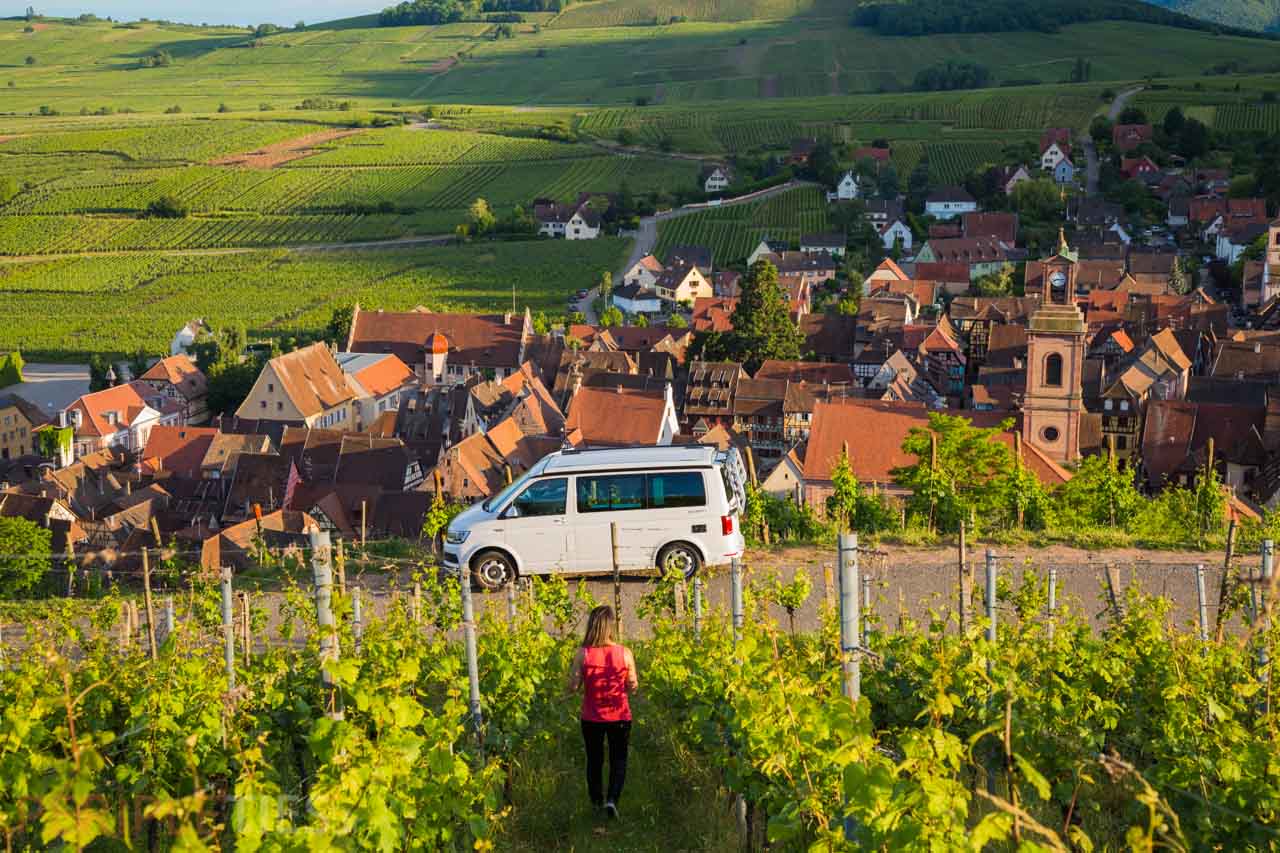
If you're a walker, don't hesitate to climb the hills to the ruins of the medieval castles. Look out for the storks, the emblem of Alsace, nesting on the roofs and street lights, and the typical colourful half-timbered houses...
Each of these villages is an invitation to take a stroll. Their medieval charm, visits to their wine cellars, labels and titles such as ‘Favourite Village of the French’ make them places of choice for tourists. The magic is at its height during the Christmas market season.
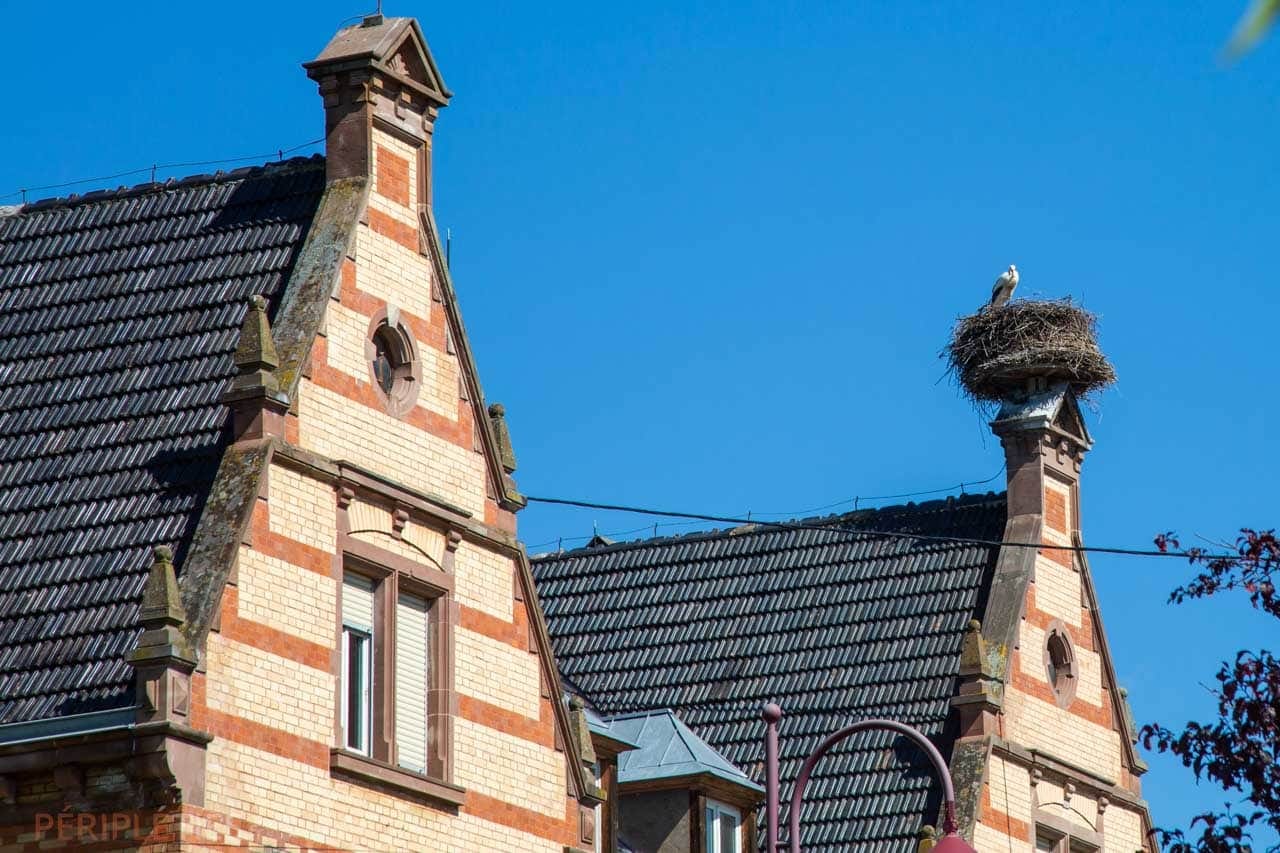
Park your motorhome with Alsace winegrowers with France Passion!
There are plenty of vineyards and wine cellars along the Alsace wine route! Sometimes it's hard to know where to stop in your motorhome for a wine tasting... So why not kill two birds with one stone with France Passion?
Thanks to the guide, you can park your motorhome, van or independent van on their land for a night and enjoy the ideal setting. All you have to do is join the network and you'll receive the guide and access to the application to find the winegrowers who are members of the network in Alsace and throughout France. The guide is valid every year from March to March. Use our promotional code to get a discount on the France Passion guide for first-time members.
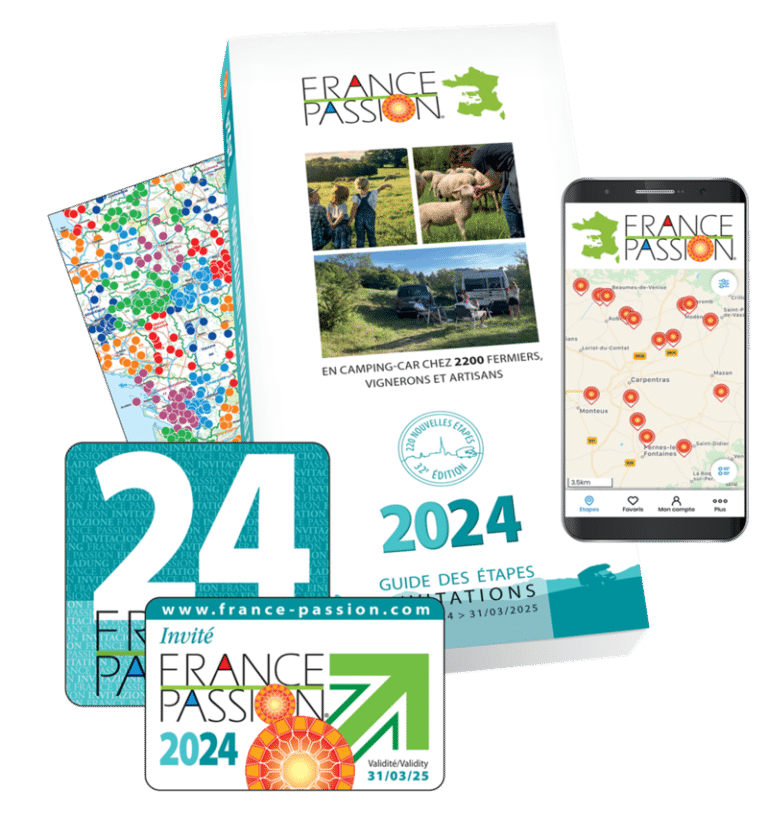
Buy the Guide France Passion 2024
The 32nd edition of the 2024 Milestones guide (March 2024 -> Easter 2025) costs 33 euros this year, but with our promotional code, save 2 euros on your first subscription (delivery and postage included).
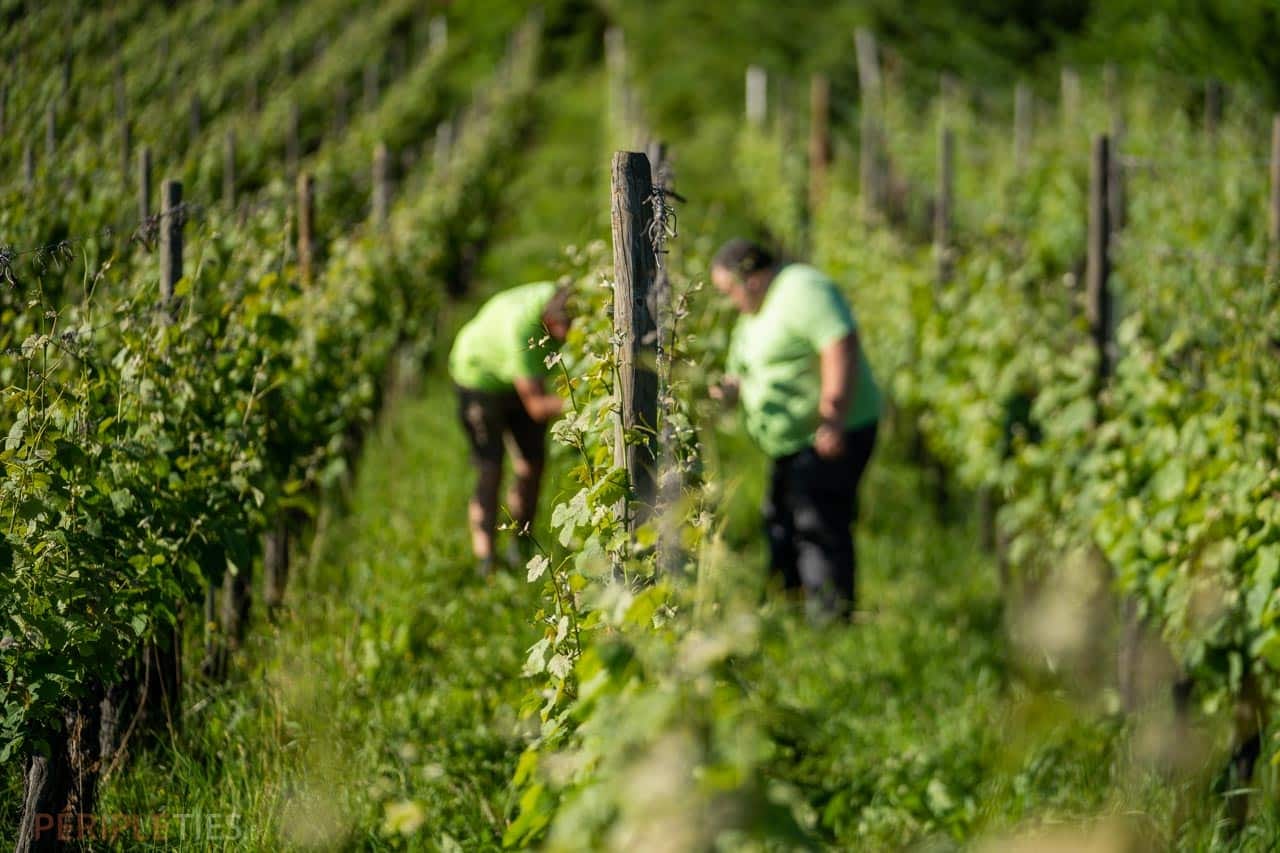
Haut-Koenigsbourg, a must-see site?
Impregnable sentinels watching over the plain, there are around fifty fortresses in Alsace. Many are no more than ruins, like the Three Castles of Haut-Eguisheim or Kaysersberg (north of Eguisheim).
Others have retained all their majesty, like the Château du Hohlandsbourg in Wintzenheim or, perhaps the most famous of all, Haut-Koenigsbourg, on the heights of Orschwiller.
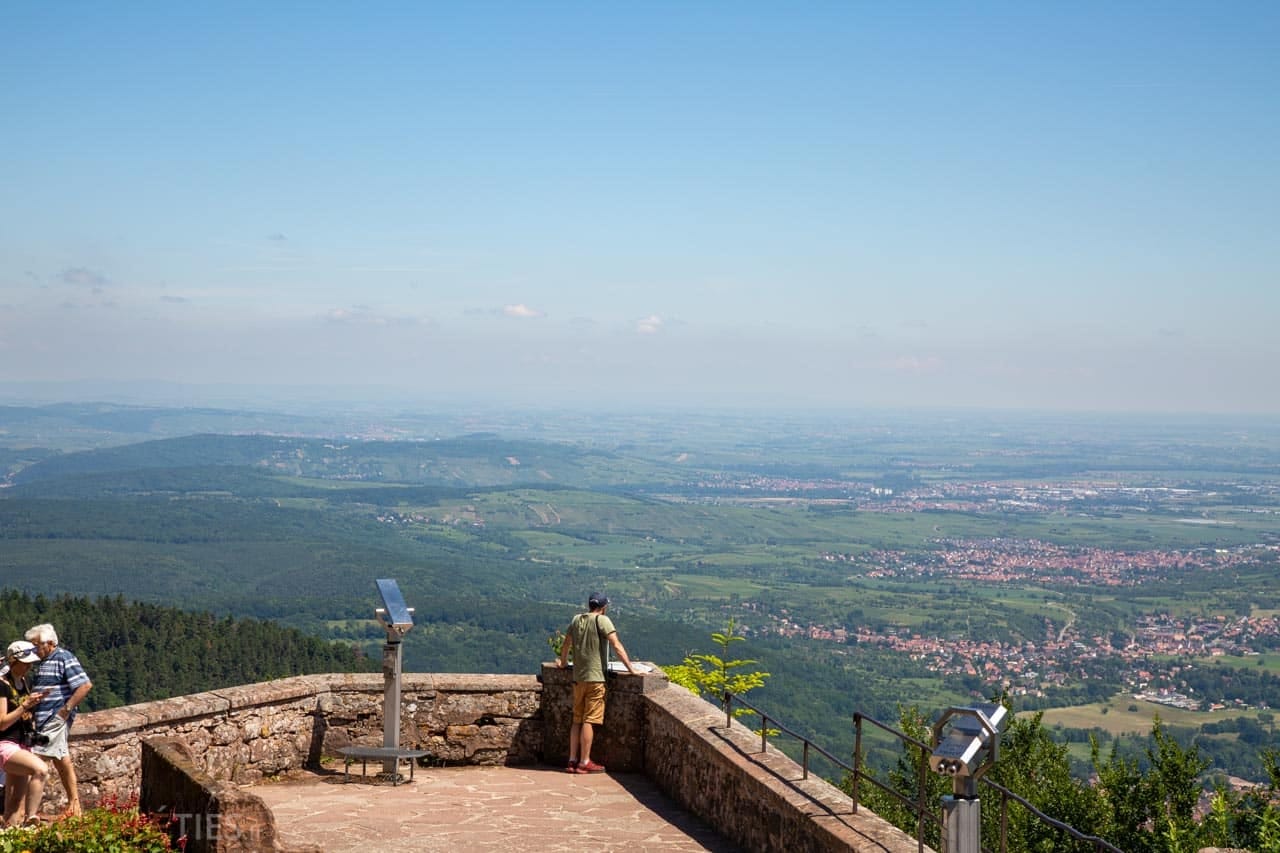
Built in the 12th century on a rocky spur more than 750 metres above sea level, Haut-Kœnigsbourg castle is an architectural treasure that has been the object of covetousness throughout history.
The fortress owes its splendour to Wilhelm II, from 1900 onwards. After centuries of Franco-Prussian battles, including the Thirty Years' War, it was offered in ruins by the commune of Sélestat to the German emperor, who had it renovated in the spirit of the Middle Ages.
Listed as a Historic Monument, Haut-Kœnigsbourg is a must-see when visiting Alsace. It offers breathtaking panoramic views over the plain, the silhouette of Strasbourg cathedral, the Black Forest (on the other side of the Rhine) - where we tested the best thermal baths in Germany - and even the Alps, on a clear day! Nearby are two major tourist and family attractions on the wine route: the Volerie des aigles (Eagles' Aviary) and the Montagne des singes (Monkey Mountain).
Drive to Barr for a wine tasting along the Grand Cru route
On your way back down to the plain, take the Alsatian vineyard route in the direction of Barr, stopping off at the villages and estates offering wine tastings and sales. You are now entering the Bas-Rhin region.
At the end of the road, with its unbleached stone facades, Mittelbergheim, listed as one of the ‘most beautiful villages in France’, has a singular charm, typical of the wine-growing villages of the 17th and 18th centuries.
The Zotzenberg hill, a Bajocian marl-limestone slope adjoining the village, is home to a great Alsatian wine.
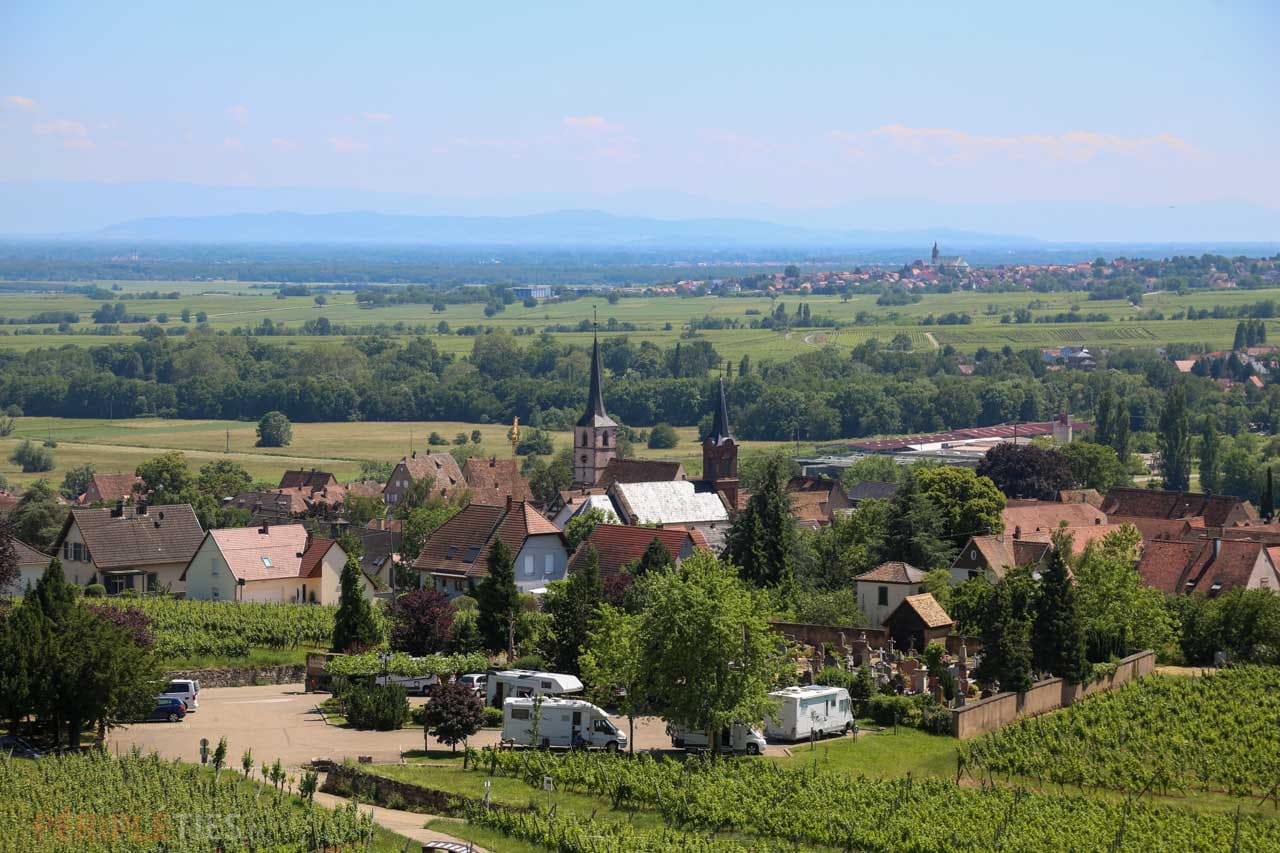
The vineyards and town of Andlau
Drive a little further west and you'll come across the magnificent wine-growing town of Andlau. It's no coincidence that Andlau came second in the French people's favourite village poll. With its narrow streets, châteaux and abbey church, the town is well worth a visit!
Ottrott, an Alsace vineyard with a special grape variety
Just a stone's throw from Mont Saint-Odile, Ottrott is another town we think is well worth a visit. It's home to a special grape variety, with its own unique characteristics, and quite rare in the region. Here it's pinot noir that dominates the Steinberg hillside.
Red wine has been grown in this small area since the 12th century, unlike the rest of Alsace, which is a land of white wines. It was Benedictine monks from Burgundy who imported young vine plants to the area. Today, the red wine of Ottrott represents a small production of 2,550 hectolitres, discreet but recognised by wine lovers.

The incredible Mont Saint-Odile
A short diversions will take you to the famous Mont Saint-Odile (764 metres), one of Alsace's most important spiritual sites. This is where the Pilgrim's Way to Santiago de Compostela passes through, where pilgrims and tourists rub shoulders in a mystical atmosphere.
In Celtic times, this hill was already a highly prized place of worship. Today, it boasts an exceptional religious heritage, with the Hohenbourg Abbey, numerous chapels dedicated to Sainte-Odile, the holy healer (see box), and the church dedicated to the Assumption of the Virgin Mary. Above all, you can admire the view over the entire Alsace plain.
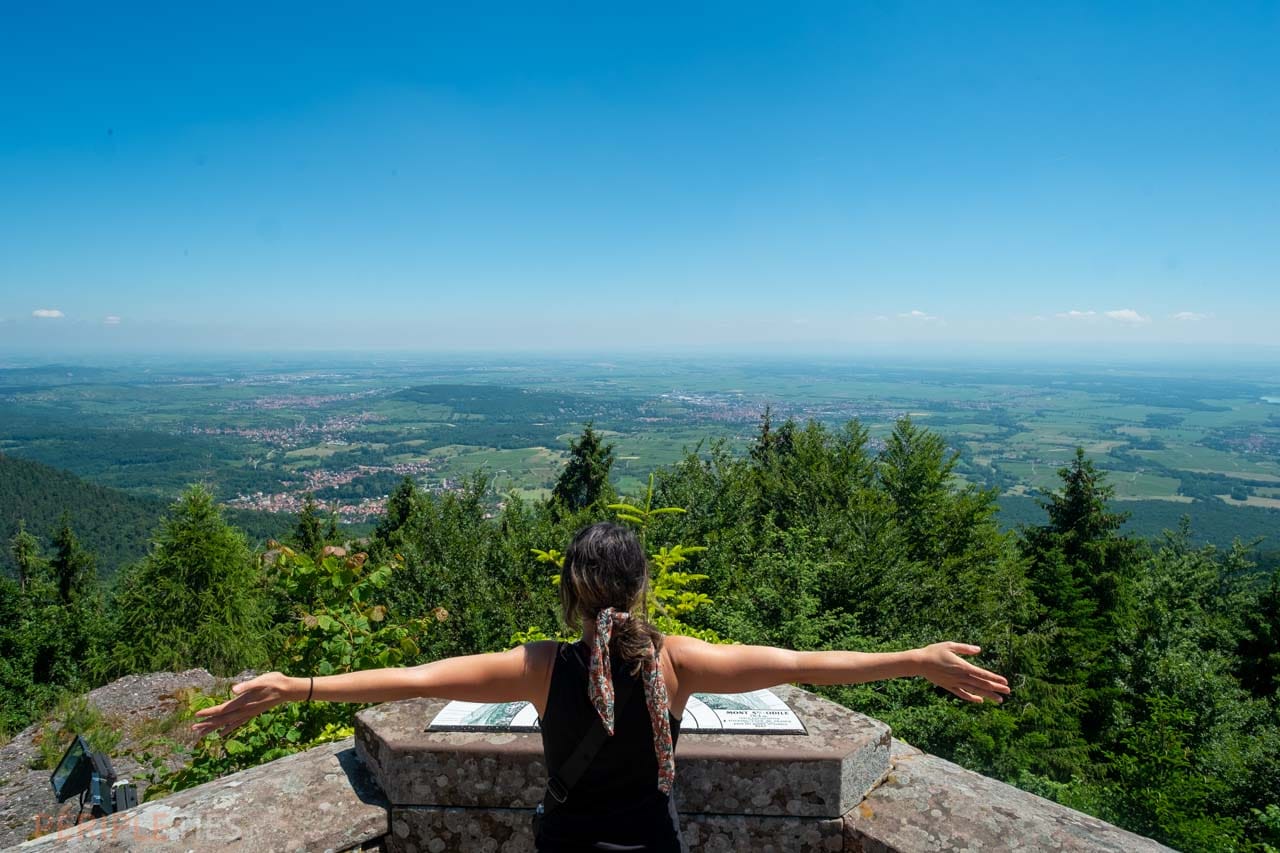
After fleeing to the Black Forest to escape a forced marriage, she ended up inheriting her father's estate, which she transformed into a vast monastic complex. Legend has it that Odile created a miraculous water that cured eye problems by striking a rock on the hill with her stick...
Since that day, Sainte-Odile has been recognised as the patron saint of healing.
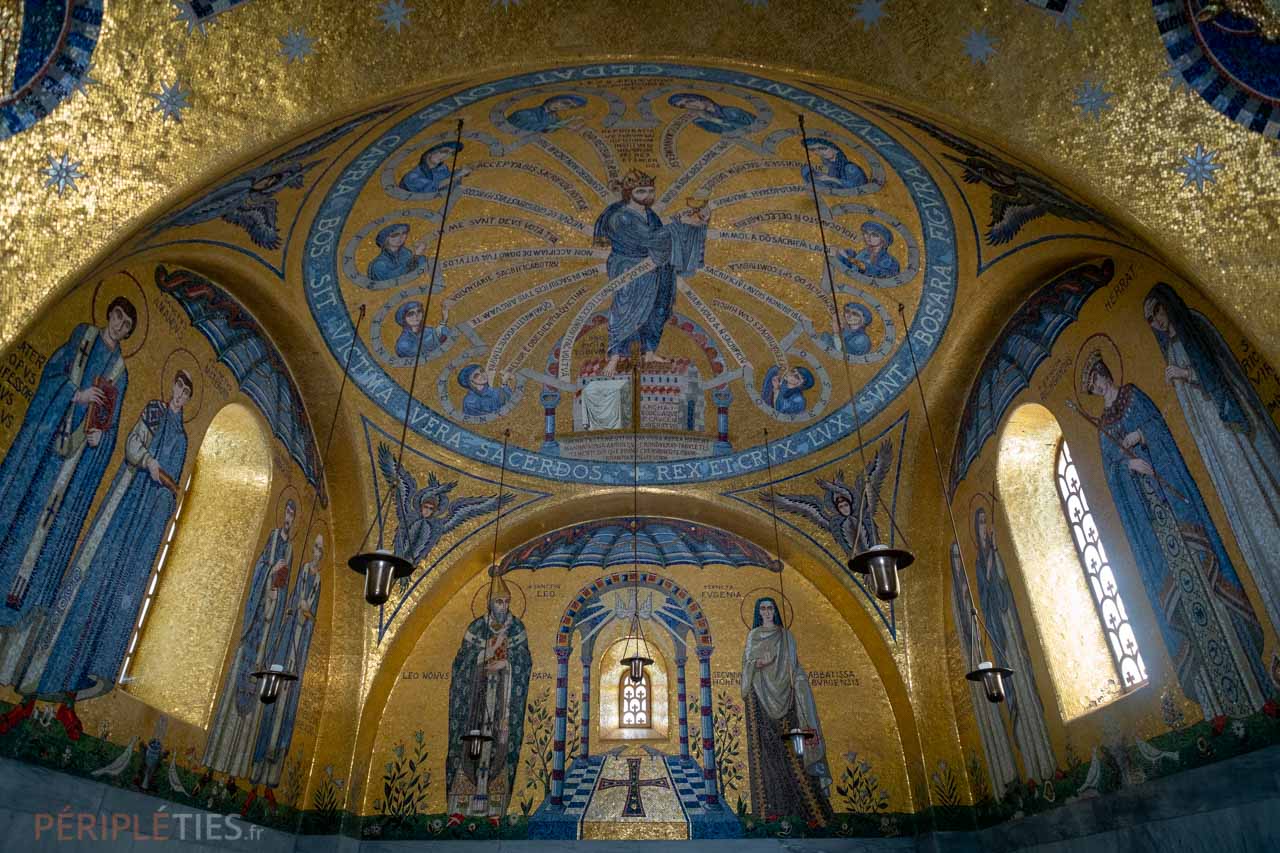
Immersion in Obernai (Direction Rosheim)
Enjoy a break in Obernai, a must-see and charming fortified town in the Bas-Rhin region. From the Mont National, you can admire a magnificent view over the plain, the vineyards and the town. A walk along the ramparts is also a must!
The town also has a sufficiently large motorhome park, which isn't exactly bucolic, but is a handy place to stop off.
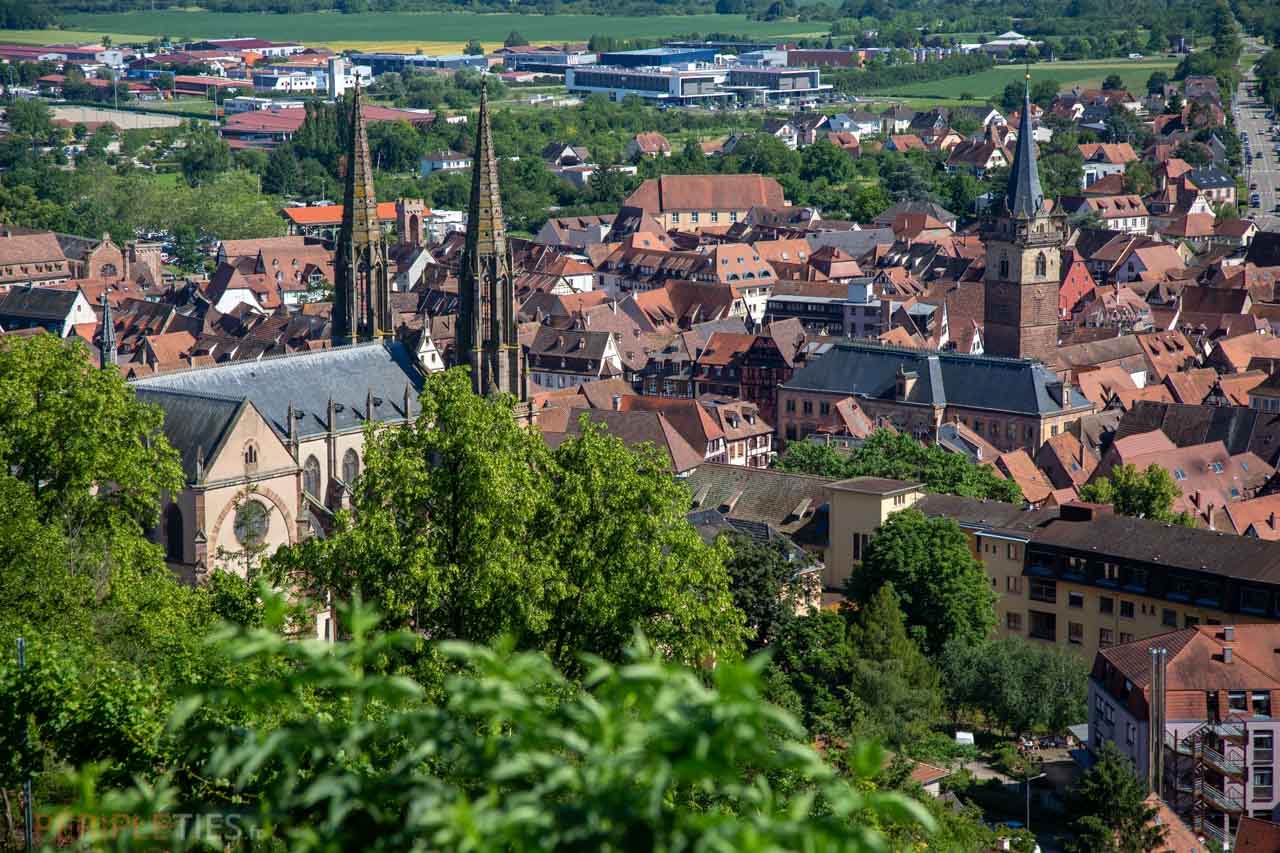
The wine route then takes you to Molsheim, home of the Bruderthal grand cru, and ends in Marlenheim, where you can enjoy a pleasant walk along the vineyard paths to admire the work of the vines, the Alsace plain and Strasbourg Cathedral.
If you get the chance, stop for a day in Strasbourg, the European capital, before heading further north in Alsace, off the beaten track.
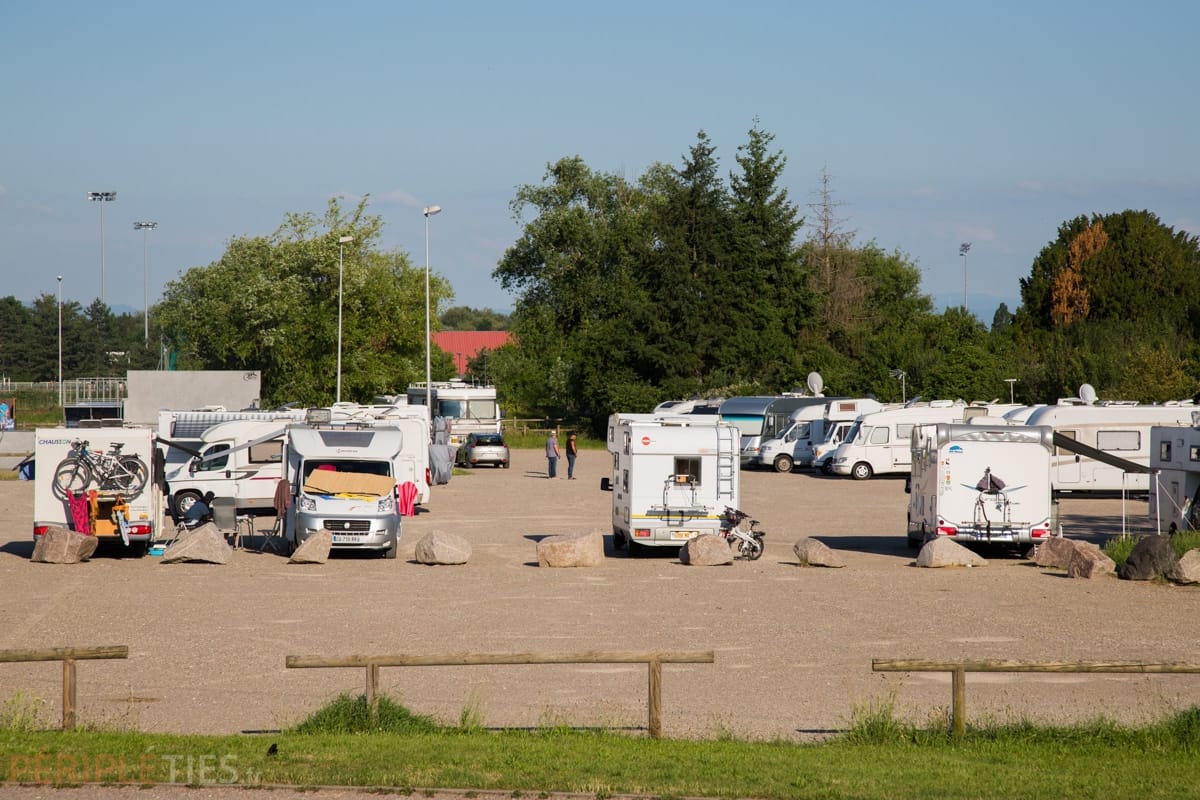
Strasbourg, European capital
A city on a human scale, home to the European Parliament and the Council of Europe, Strasbourg is well worth a visit if only for its irresistible charm and its heritage. The cathedral of Notre-Dame immediately springs to mind, a masterpiece of Gothic art, with its incredible rose window and unique façade of pink Vosges sandstone.
Discounts on the Strasbourg City Pass
To visit the city, we recommend you buy a City Pass (Strasbourg city card), valid for 7 days and giving you substantial discounts on Strasbourg's tourist and cultural activities (boat trips, museums, bike hire, shows, etc.). It is available at a reduced rate of €5 (instead of €6.5) when booked via the GetYourGuide website.
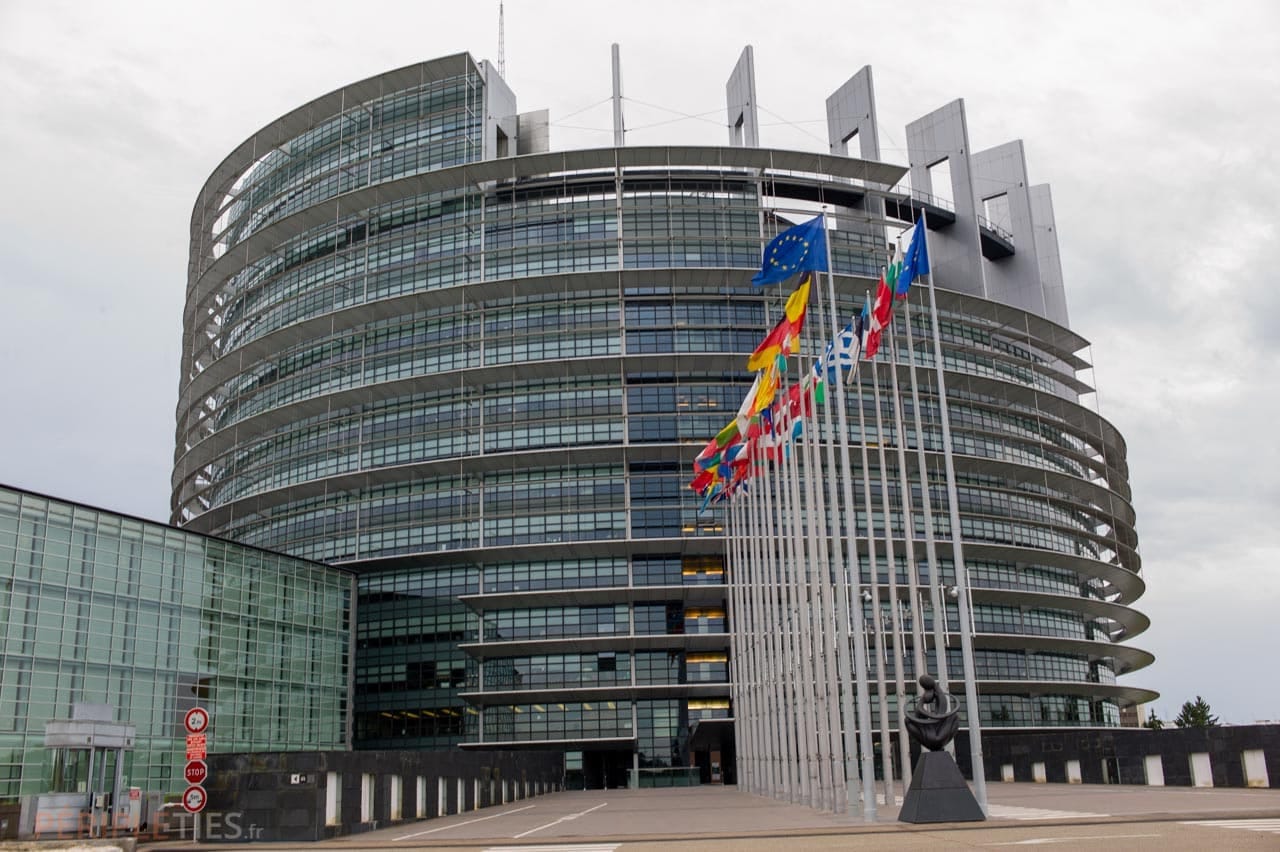
Strasbourg is also a city of art and history, with many museums and galleries. You'll also love the city centre, ringed by canals, and the ‘Petite France’ district, with its 16th and 17th century half-timbered houses. It's all easily done by bike.
Free tour of Strasbourg
To soak up the capital's past while discovering its most important corners, you can take a free guided tour of the city. Allow 1 hour 45 minutes for this free tour of Strasbourg (in French).
Park in a P+R tram park-and-ride facility
A good deal for motorhomes is to park in Strasbourg's Tram P+R relay car parks for €4.2 a day. Parking includes the return tram journey to the city centre (for up to 7 occupants), which isn't bad, is it?
Alsace off the beaten track
The Alsace wine route officially stops just outside Strasbourg. But we recommend that you continue north, one of our favourites. Less popular than the south of Alsace, perhaps also less middle-class and more rural, the ‘Vosges du Nord’ region borders Germany and is full of little nuggets! There are also some lesser-known but just as delicious wines.
It's a paradise for motorhome travellers on the wine route, where they can enjoy greater freedom. You'll find authentic villages like Hunspach, with its imposing white timber-framed cob houses, and Wissembourg.
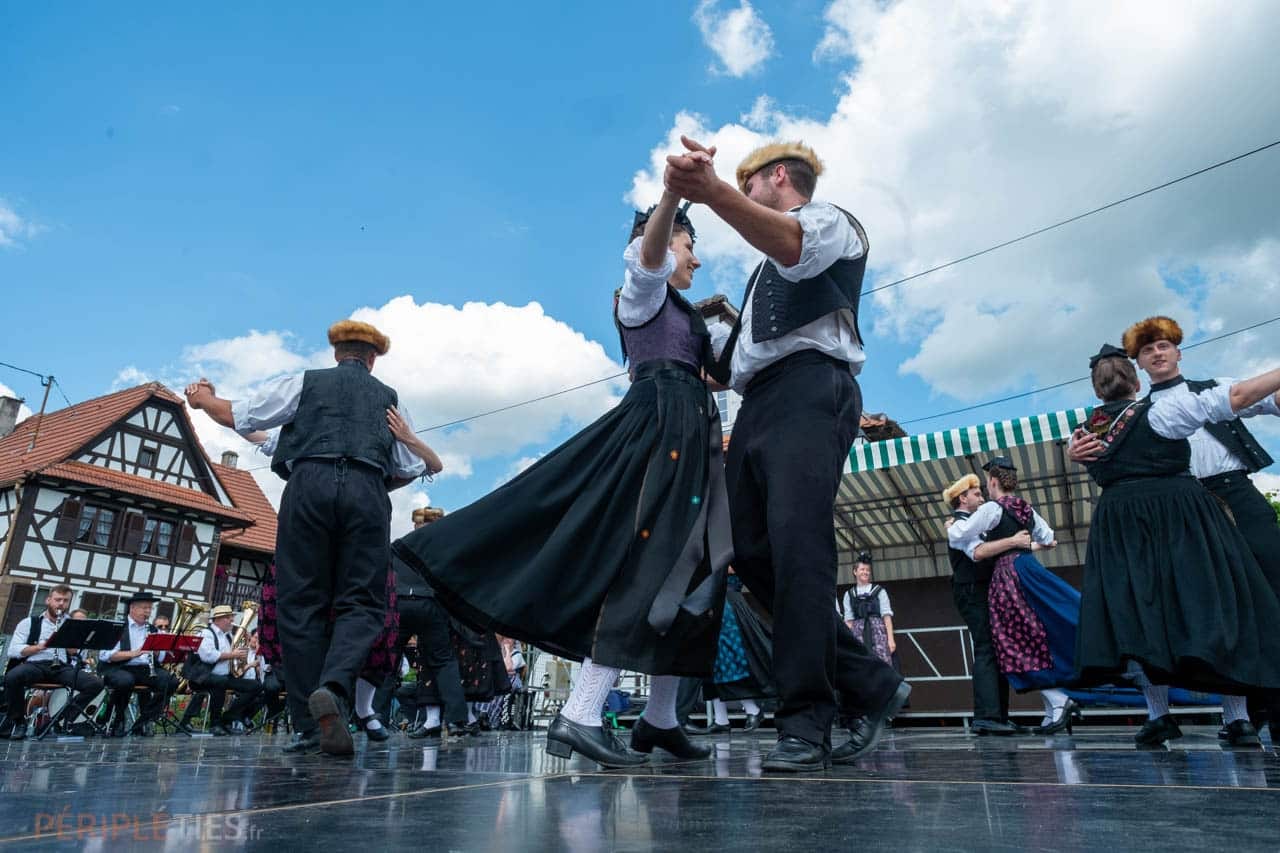
Wissembourg, the Little Venice of the North
Like Colmar, Wissembourg is a small fortified town dotted with canals, and enjoys the title of Little Venice... of the North! The town is a delight of tangled, cobbled, flower-filled streets and incredibly well-preserved 16th-century houses.
The roads wind through fields dotted with pillboxes and remnants of the Great War. Not far from here is the Schoenenbourg fort, the largest Maginot Line fort open to the public in Alsace. Lembach in the Steinbach Valley is also well worth a visit, before following in the footsteps of the four châteaux. You can admire Alsace's most northerly vineyards at Cleebourg. Pinot gris and pinot blanc auxerrois, replanted after the Second World War, are grown here.
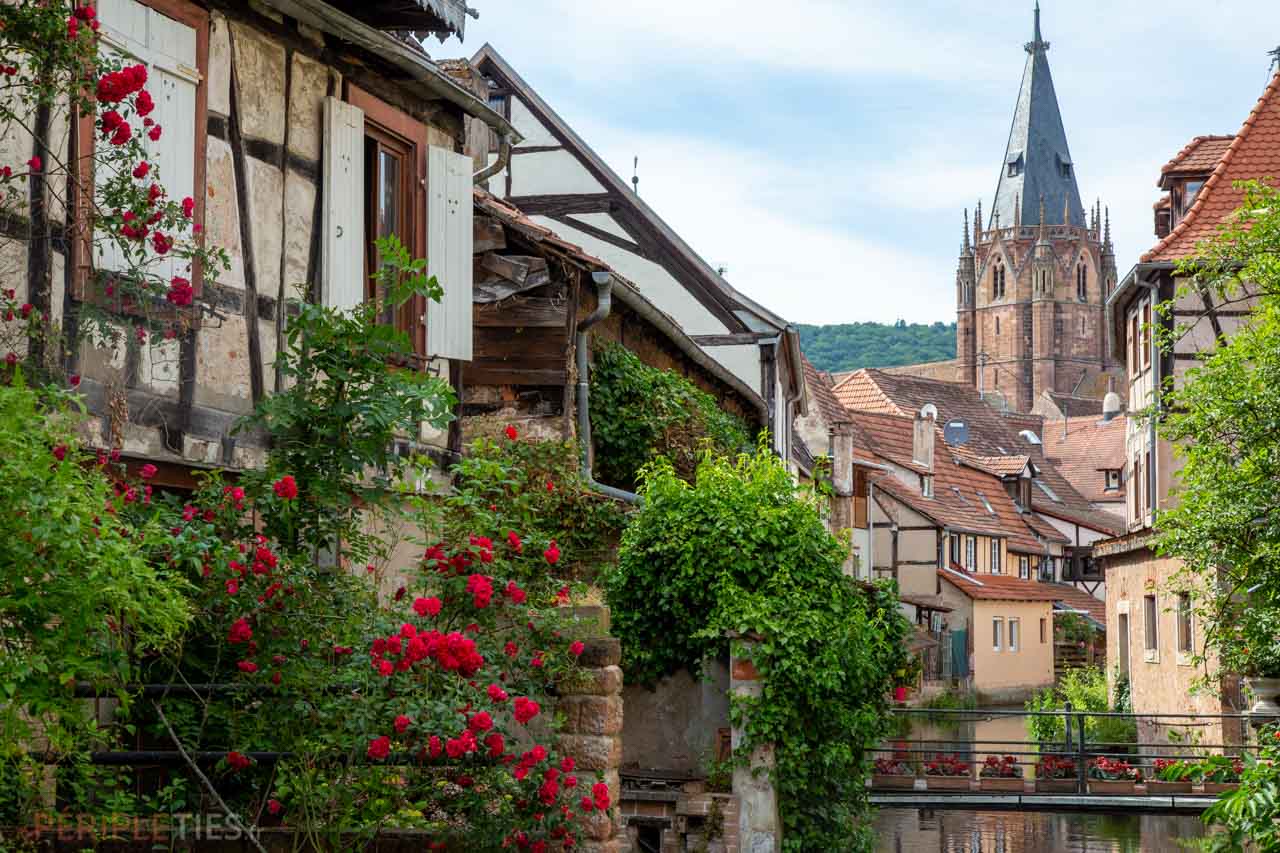
The four castles of northern Alsace
Built in the 12th century, the fortified castle of Fleckenstein dominates the entire northern Vosges region. It was an important defensive structure on the northern borders of the Duchy of Alsace. Of the four castle ruins straddling the Franco-German border, it is the best preserved. The castles of Wegelnburg, Hohenburg and Löewenstein offer fantastic views over the massif. They are easy to reach on foot, following the signposted footpaths.
Head back down the valley to Niederbronn-les-Bains, a spa town that also offers the highest panoramic view in the region, from the tower of the Grand Wintersberg. But you'll have to climb 112 steps to be rewarded!
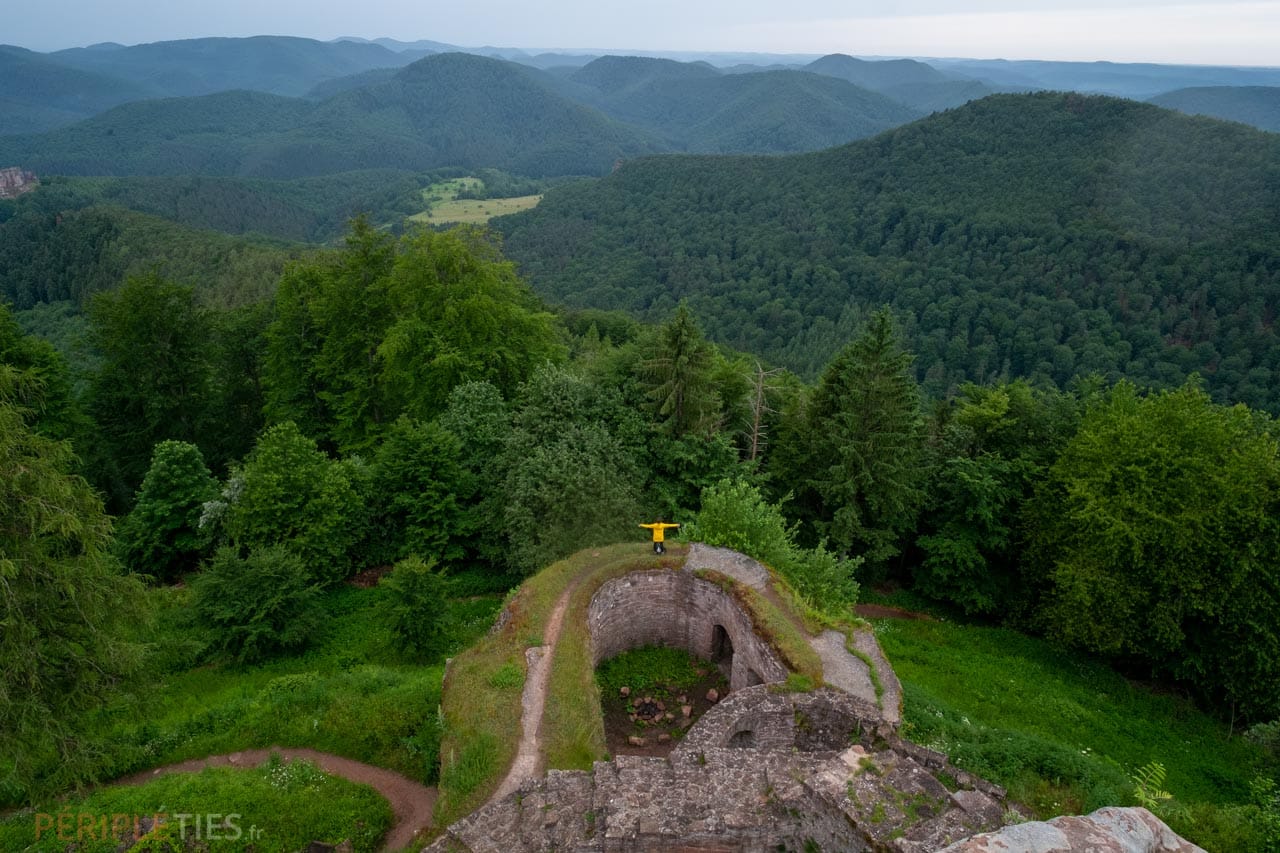
Places of remembrance in Alsace
The territory of the Vosges du Nord Regional Nature Park can be criss-crossed by pastoral meadows on the way back to Saverne. If time permits, you can follow the Bruche valley, and make a diversion to a site of major historical value in the region.
The Struthof concentration camp
The only former concentration camp on French territory occupied by Nazi Germany during the Second World War, Natzweiler Struthof is a deeply moving place of remembrance. Nearly 22,000 deportees died there. So let's be warned: it will take some time to recover from the emotions aroused by this chilling reminder of history, and to get your heart back in the right place.
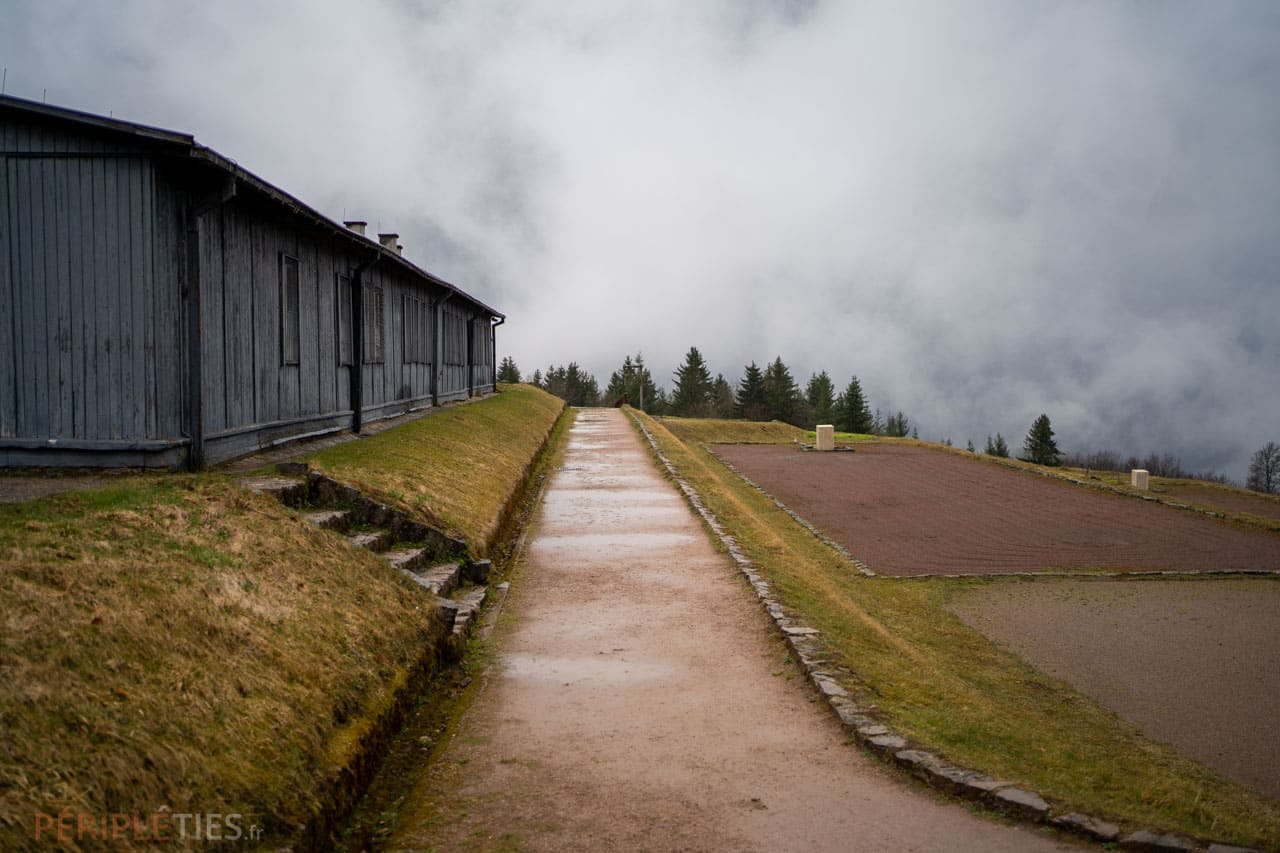
The ‘ballons’ of Alsace
The next stop is Sainte-Marie-aux-Mines, the starting point for the famous Route des Crêtes, which we travelled by van and which marks the boundary between the Vosges and Alsace for almost 90 km (as far as Cernay). You'll be travelling along the ‘blue line of the Vosges’, which will have accompanied your earlier journey along the wine route.
From passes to summits, you climb these gentle curves, creating harmonious balloons populated by fir forests, green pastures, thatched roofs and sublime viewpoints. Climb the Col du Bonhomme (949 m), then the Col de la Schlucht, discover the summit of the Hohneck (1400 m), the Markstein, then the Grand Ballon, and enjoy the high altitude lakes.
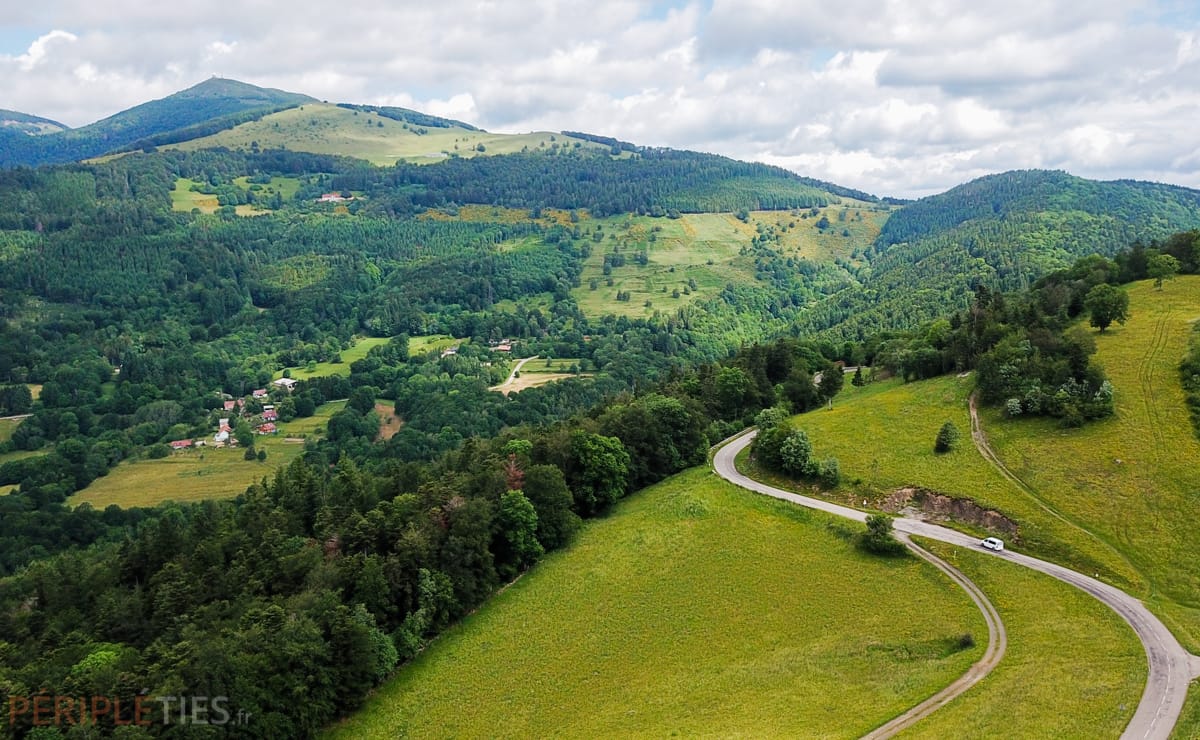
The Grand Ballon: a breathtaking panorama
At 1,424 metres, the Grand Ballon is the highest point in the massif. From the Observatoire Militaire, an active radar used by civil aviation, you can see the Black Forest, the Bernese Alps, Mont-Blanc and the Alsace plain stretching out at your feet...
It's magical! Don't forget to stop off at one of the typical inns serving the traditional Marcaire meal. The last stage of this route will take you to Vieil Armand via the Col Amic.
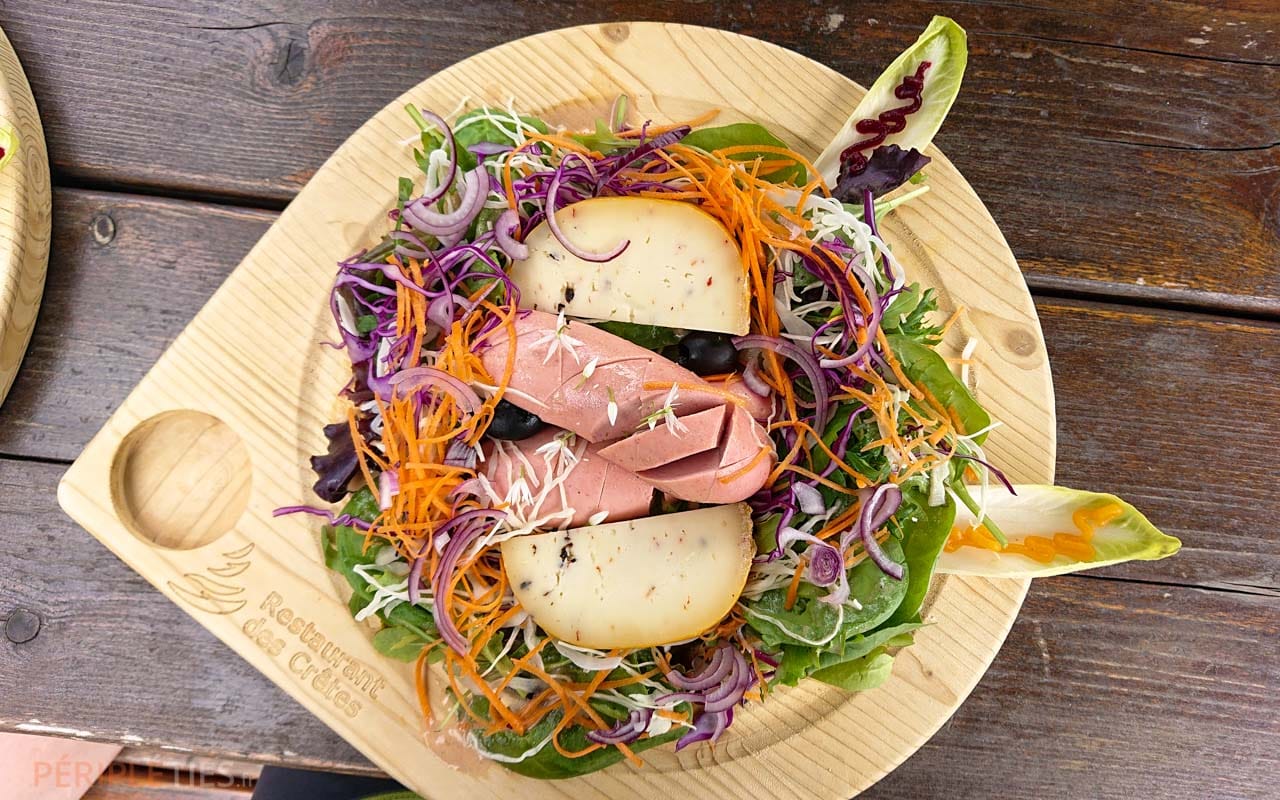
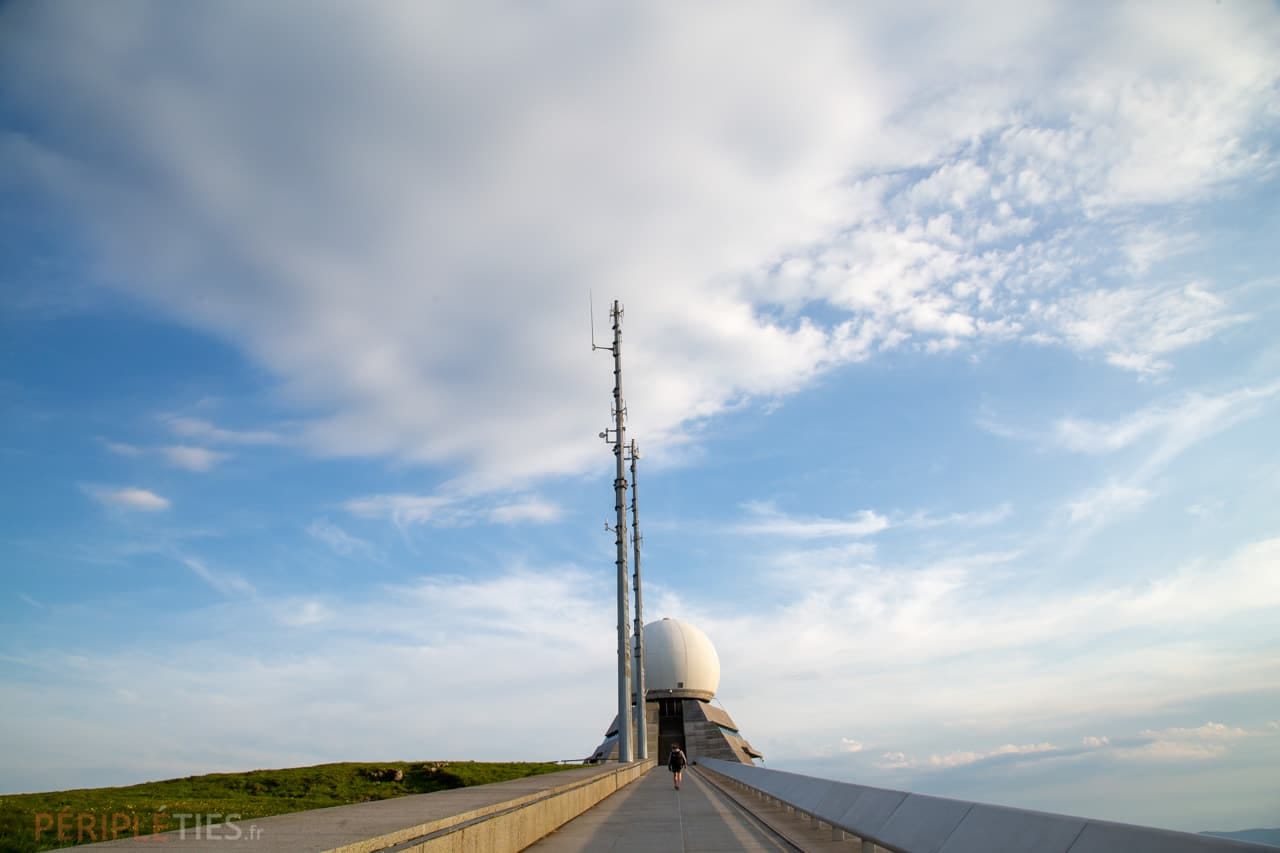
The Hartmannswillerkopf, a memorial for peace
Otherwise known as the Hartmannswillerkopf, it overlooks the Alsace plain on the heights of Wattwiller at an altitude of 956 metres. A summit fought over by the French and German armies during the Great War, it still contains the battlefield, with intact trenches, a National Monument and the first Franco-German Historial.
This itinerary along the route des crêtes and the loop ends in the valley at Cernay. It will have given you a taste of all the richness and subtleties of this region, and all you'll probably want to do is go back!
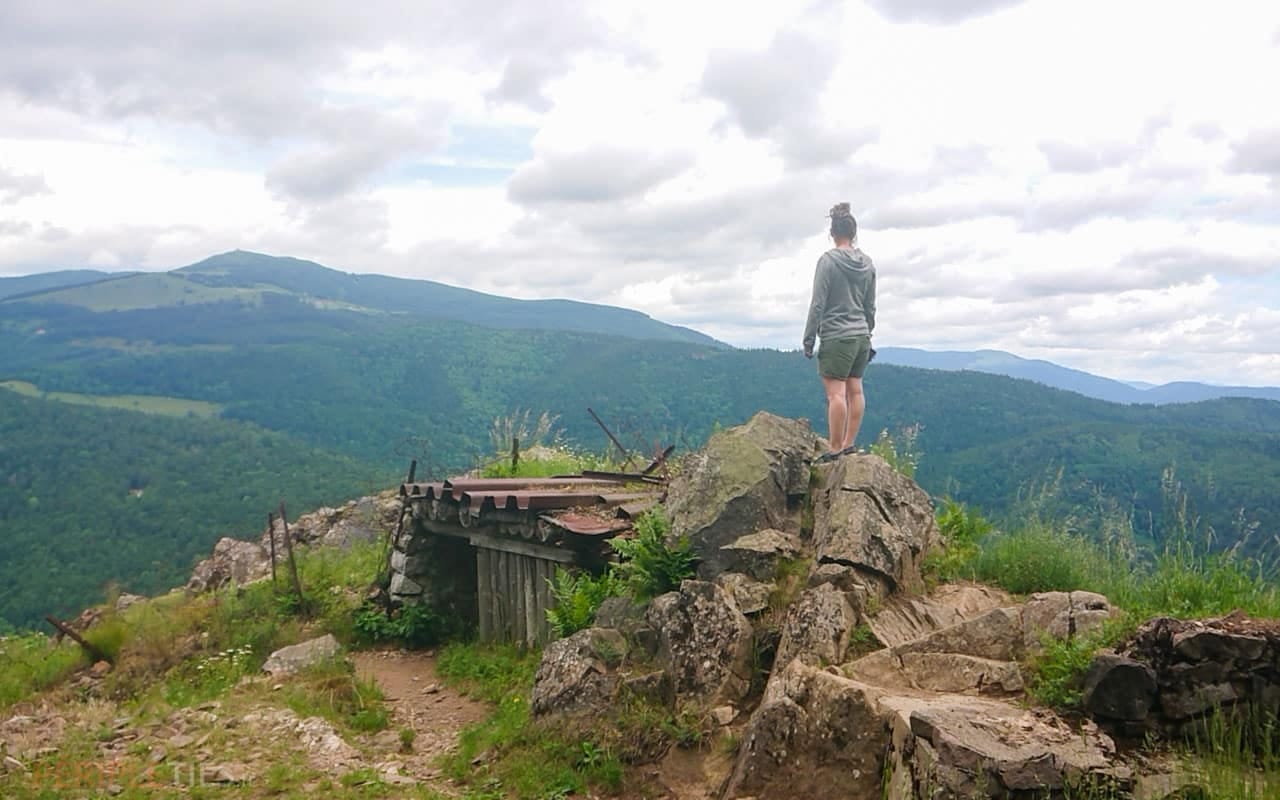
Service areas and campsites in Alsace
If you use your motorhome as a means of transport on the Wine Route, here are the various service areas and campsites where you can stop off.
- Kaysersberg car park. Erlendab car park (€10 including services) N 48.13616 / E 7.26191
- Aire des Trois-Epis. From April to November, free parking, services and electricity €6. N 48.10101/ E 7.22948
- Camping-Car Park, route de la Messagerie. Unlimited parking a stone's throw from the historic centre (€5 service included) N 49.031799 / E 7.946800
- Service area in Reichshoffen. Free parking and service. N 48.932112 / E 7.656151
- Terrasses du Lac Blanc service area, Orbey. Parking 7€ including services, free with restaurant meal. N 48.13550 / E 7.09158
- Camping Huttopia, Wattwiller. April to November N 47.832737 / E 7.165494
When to do the Alsace Wine Route? Dates of key events in 2024
- Rose festival in Saverne on 16 June 2024
- Wine and gastronomy festival in Ribeauvillé 19 and 20 July 2024
- Hop Festival in Haguenau, mid-August
- Corso fleuri in Sélestat, 10 August 2024
- Fête des Ménétriers in Ribeauvillé (Pfifferdaj), 31 August to 2 September 2024
- Beer Festival in Molsheim, 1st Sunday in September
- Sauerkraut Festival in Krautergersheim, late September/early October
- Christmas markets throughout Alsace from late November to late December.
The best guides and blogs for visiting Alsace
- Guide du Routard ‘Alsace’ 2023 from €9.99
- Guide Vert Alsace - Massif des Vosges from €14.90
- Our friend Céline's (very good!) blog ‘Une Fille en Alsace’ (A Girl in Alsace)
